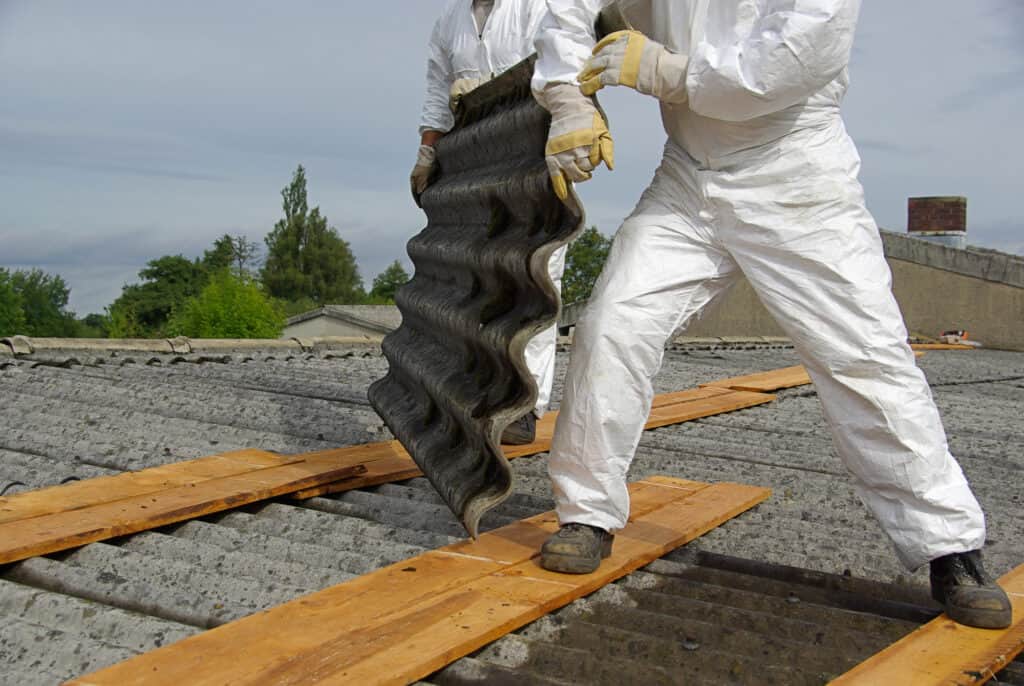Working Safely with Asbestos: A Guide to Ensuring Safety
According to IOSH, Britons face the highest risk of developing mesothelioma due to asbestos exposure, and HSE estimates that 20 tradesmen per week lose their lives as a result of such exposure.
Asbestos was extensively used in the construction of buildings throughout the 20th century, making it crucial for employees to understand how to work safely around it, avoid contact, and properly dispose of asbestos-contaminated hazardous waste.
Who is at risk of asbestos exposure? As long as asbestos remains undisturbed, most employees are unlikely to be exposed to its dangers. However, certain trades pose a higher risk, particularly those involving alterations to building structures or work near damaged or unstable buildings constructed before 2000.
Occupations at risk of asbestos exposure include:
- Construction and demolition contractors
- Firefighters
- Industrial workers
- Tradesmen
- Surveyors
- Telecommunications engineers
- Maintenance engineers
Why was asbestos used in construction? Asbestos was widely used in the construction industry for its favorable properties. It served as insulation, panelling, floor tiles, and roof sheeting, and even had decorative applications like Artex. The UK imported over 170,000 tonnes of asbestos annually during its peak use in the 1960s and 1970s due to its affordability, availability, strength, insulation, fire resistance, heat resistance, and sound absorption. However, its devastating long-term effects led to its prohibition in 1999.
Where can asbestos be found? Before the ban, asbestos was present in hundreds of thousands of construction, commercial, and household products. It is estimated that potentially half a million UK buildings still contain asbestos. Common uses of asbestos in properties included fireproof coatings, concrete and cement, bricks, pipes, gaskets, insulation, drywall, flooring, roofing, joint compound, paints, and sealants.
What makes asbestos dangerous? When asbestos is cut, drilled, or broken, it releases microscopic needle-like fibers into the air, which can be inhaled or ingested. These fibers are so small that they can bypass regular dust masks. The body cannot break down these fibers, causing them to remain in the lungs for decades and leading to long-term damage and disease.
Health hazards associated with asbestos exposure include:
- Mesothelioma: A fatal cancer of the lung lining primarily caused by asbestos exposure.
- Asbestos-related lung cancer: Almost always fatal.
- Asbestosis: Scarring of the lungs, which significantly affects the quality of life.
- Diffuse pleural thickening: Thickening of the membrane surrounding the lungs, resulting in breathlessness.
Symptoms of asbestos-related diseases may not appear immediately and can take 15-60 years to manifest, contributing to the increase in asbestos-related deaths in the UK, even after its ban.
How are employees protected from asbestos? In the UK, the building owner or responsible party for the maintenance of a non-residential property has a duty to manage asbestos and ensure the health and safety of individuals in the building. This includes keeping records of asbestos or potential asbestos-containing materials, their location, and condition. Risk assessments should be conducted to identify potential asbestos exposure and develop appropriate management plans.
How to avoid asbestos in the workplace For those whose work does not involve maintenance or engineering on buildings, avoiding contact with asbestos is relatively straightforward. Asbestos becomes hazardous when disturbed, releasing fibers into the air that can cling to hair, clothes, and skin. It is important to refrain from tampering with pipe insulation and ceiling tiles in old commercial buildings constructed in the 1960s and 70s.
Working safely with asbestos for tradespeople Tradespeople, engineers, and surveyors who may encounter asbestos in their work need to be able to identify such situations before arriving on-site. It is crucial to receive the necessary training, including asbestos awareness courses, to understand how to avoid exposure. Workers who will be disturbing asbestos require additional information, instruction, and training. Conducting a risk assessment is important to determine if the work can be carried out without asbestos exposure. Proper personal protective equipment (PPE) must be worn, including type 5 disposable overalls, single-use disposable gloves, laceless boots, and suitable respiratory protective equipment (RPE) with a UK-assigned protection factor (APF) of 20 or more. For certain asbestos-related tasks, it is necessary to hire a licensed contractor approved by HSE.
Safe removal of hazardous asbestos waste In England, Wales, and Scotland, asbestos waste with more than 0.1% asbestos content is considered hazardous or special waste and must be handled accordingly. Holding a waste carrier’s license is necessary for asbestos removal, and the waste must be segregated, contained, and labeled correctly before being transported to a hazardous waste transfer station. If one does not possess a waste carrier’s license or the required equipment, a registered waste carrier can be arranged for transportation. It is essential to wash thoroughly after handling any asbestos-contaminated items to minimize the risk of carrying asbestos fibers home.
Remember, working safely with asbestos is of utmost importance to protect yourself and others from its long-term health hazards.

